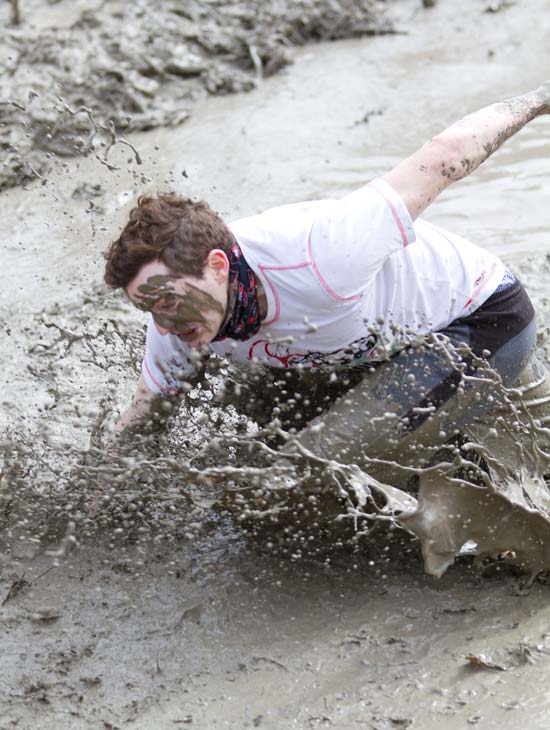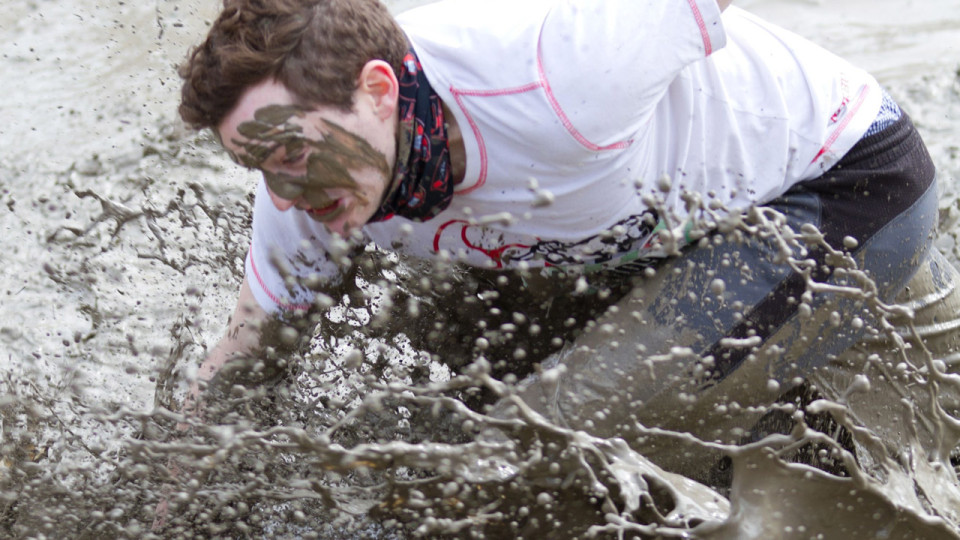Pavement running is simple: Warm up, reach your running stride and speed and stay there until it’s time to cool down.
But there lies the problem: If this is done repetitively, doesn’t that seem a tad boring?
Thanks to runners looking for something outside the typical 5 kilometer and marathon runs, there has been a renewed popularity in cross-country running along with new events like mud runs and obstacle runs. Fortunately, with the proper focus on training techniques, any runner from a newcomer to the sport to the seasoned marathoner can transition to these types of events.

What makes multi-terrain runs different from pavement runs?
Most of what we know about the changes in running mechanics stems from a study by the Cardiff Metropolitan University which found that as surfaces get softer, gymnasts would stiffen their legs. Injuries seem to bear this out: Shifting from hard paved to soft unpaved surfaces means reducing impact while increasing the chance of a twisting injury. As a result, the chance of knee damage goes down, but ankle injuries go up.
Those who are dealing with knee injuries, IT band issues and shin splints will have far fewer issues with off-road running, while those with Achilles tendon problems will have difficulty due to the strain caused by increased heel motion. It’s also easy for someone who already has a good base from road or treadmill running to jump in too fast, resulting in injuries. It takes some time to build up stability muscles and refine techniques to ensure that runs can be done safely, regardless of what a runner’s legs and cardiovascular system can handle.
Each surface has its own unique advantages and disadvantages, requiring specific techniques:
Grass
This is an almost ideal running surface, providing plenty of give and a relatively even surface. However, tall grass can hide twigs and holes, increasing the chance of injury. When in doubt, walk over the surface first to prevent any injuries.
Dirt
It has more give than pavement, but it’s also more slippery. Picking a line requires some forethought about the ever-changing surface, which requires learning to look ahead without looking down and ruining form.
Mud
Successfully running in mud requires a light, balanced stride: Push too hard, and the runner’s feet can slip or get bogged down. Care also must be taken to avoid mud build up to keep the added weight from interfering with the run.
Sand
This combines the sinking problems of mud with increased heel movement, making it the most technically and aerobically difficult surface to run on. Wet sand provides a more stable surface.
There’s one other factor to consider: Dirt roads are designed differently from paved roads. A road with heavy traffic will be designed to go over the flattest land available. Switching to dirt roads and trails will mean having to make steeper climbs and descents than paved roads in the same area. Dirt trails are also flat because they don’t have to be shaped to drain off water. For most runners, this will mean less pain because of even stress on their legs. However, if you consistently have pain in one knee or ankle, one leg may be shorter than the other, and the effect of the road can compensated for this difference.

How can I stay safe on off-road trails?
Avoid obvious cover and keep a whistle on hand in case of an attack. If you are being followed, go toward a group of people. Carry a whistle and wear highly visible clothing to make yourself easier to find.
If a dog is approaching you, stop, let the dog come up to you, and don’t look directly into its eyes. This will make you seem less threatening and will keep most dogs from attacking.
How can I train to be fast?
Cross-country running is an entirely different activity from road and treadmill running, and requires an entire re-think about what makes up a good run. This means breaking a lot of habits that result from other forms of running.
Terrain changes also mean that the speed and difficulty of any given kilometer can vary widely. Find a course and stick to it, judging performance based on the time for that route.

Think Tempo, Not Speed
In the first few runs, work on taking steps at a steady rate, but adjust the distance of each stride depending on the steepness and slipperiness of the terrain.
Interval training, particularly pyramid runs and fartleks, can help runners adjust to different running speeds and will help to maintain the pace on any terrain helping increase speed regardless of circumstances.
Think Difficulty, Not Tempo
Once the runner can adjust their stride, it’s time to adjust the tempo. A heart rate monitor can be helpful for getting a feel for the correct pace throughout the route, but it isn’t strictly necessary. Aim to keep a steady cardiovascular load throughout the run regardless of the current terrain.
Endurance First, Speed Second
This is the most common mistake of new cross-country runners: It’s going to take a lot of running, not a lot of fast running, to get good. Even experienced runners should plan at least three months of transitional work before tackling their first event.
If course conditions can’t be replicated on a given day, aim to get the equivalent amount of time and effort rather than the equivalent distance. For example, if the normal training regimen includes a five kilometer mud run taking about an hour, aim for an hour-long road run, even if that means going ten kilometers.
What other training will help?
Hill training builds leg strength, enforce proper form and help break tempo. This is particularly important when learning control for safe dirt running, particularly when controlling descents. Being able to land each footfall gently at any angle is key to avoiding slipping and falling.
Grass sprints are a great way to improve speed while reducing impact. Look for a local soccer or football field to practice on: These are almost guaranteed to be smooth and free of hazards.
Obstacle courses combine upper body tasks along with running. Instead of separating the two exercise regimens, use circuit training to get used to transitioning between the two activities.

Which shoes do I need?
Barefoot running allows for more stability training and a better feel for slippery terrain, but many new runners may be a bit squeamish about running through the woods without knowing what their bare feet may tread upon. On the other hand, the thick soles of traditional cross country shoes will make experienced runners feel like they’re on stilts and will cause any runner to worry about rolling their ankles no matter how wide the heel base may be.
To help alleviate both issues, traditional and barefoot-style trail shoes are slowly merging together in design. New materials are allowing standard trail shoes retain their flat, spiked soles for grip without the height, while these same compounds are allowing the manufacture of minimalist shoes that prevent injury from sharp objects while maintaining feel and flexibility.
Even those who opt to go the full trail shoe route should integrate barefoot sprints into their training to help build their stability muscles and give them a better feel for the terrain.
Running in the mud? Look for something with a waterproof upper to keep water weight from making the shoe heavier.
What does it take to run on different terrains?
- Learn how to maintain a steady effort, not a steady pace.
- Take the time to build stability muscles and learn how to safely and comfortably run on the terrain.
- Maintain training time, not distance, when off-road trails aren’t available.
- Use hill training, interval training and barefoot sprints to focus on the technical aspects of multi-terrain running.





